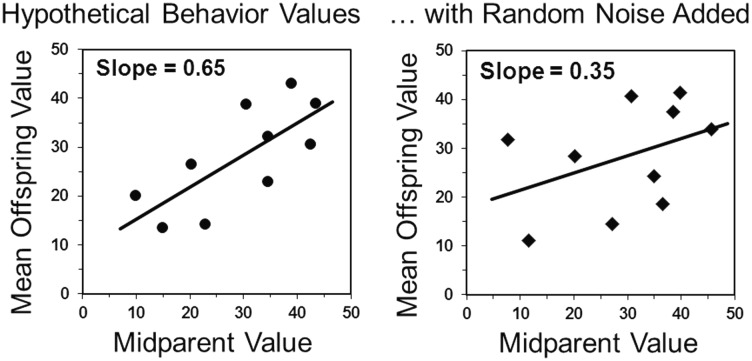Fig. 2.
Illustration of how low repeatability of behavior will reduce its narrow-sense heritability (ratio of additive genetic variance to total phenotypic variance in a population). On the left are hypothetical values for a behavioral trait for the average of the two parents and the average of their offspring (presuming that sex differences either do not exist for the trait in question or that they have been removed statistically). In this case, the estimate of the narrow-sense heritability is the slope of the least-squares linear regression (assuming no non-genetic parental effects and no shared-environmental effects). On the right, random noise has been added to the X and Y values for each of the 10 families, which results in a lowering of the strength of the relationship and hence a lower slope. A reduced tendency for a trait to “run in families” because of low repeatability (caused by high liability of the trait and/or high measurement error per se) will reduce the rate of response to directional selection, whether natural, sexual or artificial.

